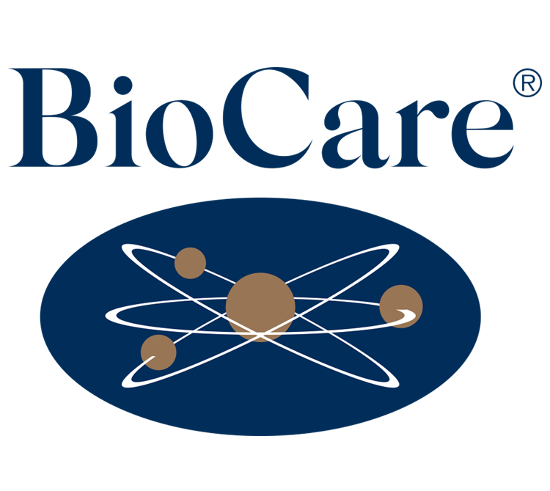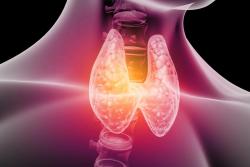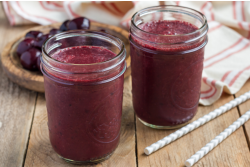Article Summary:
- About 1 in 10 women in the UK suffer with endometriosis
- Endometriosis can be linked with a lot of symptoms such as heavy periods, painful ovulation or infertility; in more severe cases women can undergo hysterectomy.
- Hormones can play a role in endometriosis, usually oestrogen dominance but other factors such as gut health or inflammation can be triggers.
- There are lots of dietary and lifestyle changes that you can do to prevent or manage endometriosis symptoms.
Endometriosis is the growth of cells from the uterine lining, the endometrium, in other areas such as the ovaries or colon. These cells respond to hormone fluctuations in the same way as in the uterus, thickening under the influence of oestrogen and then shedding after the sudden drop of progesterone, in absence of fertilisation. However, unlike the cells in the uterus, these cells have nowhere to escape, making menstruations extremely painful and causing a whole lot of symptoms.
How many women suffer from Endometriosis?
The average woman can spend 10 years, or 3650 days, having a period. For many, these are years of life-affecting symptoms, such as debilitating pain and fatigue. This is especially the case for women with endometriosis. One in ten women in the UK have endometriosis, but diagnosis is tricky and can take up to a staggering 7.5 years.1
Key symptoms of Endometriosis
Hormonal fluctuations are part of a normal female monthly cycle, so experiencing mild abdominal cramps and breast tenderness, can be normal for some individuals. For endometriosis, other symptoms can include:
- Painful and heavy periods
- Back, pelvic, and ovulation pain
- Painful bowel movements, urination, and intercourse
- Bleeding between periods
- Nausea
- Extreme tiredness
Endometriosis can also have a significant impact on fertility and miscarriages. Up to 50% of women can have difficulty conceiving2 as the growth of endometrial-like tissue can block egg release or prevent egg and sperm from meeting. Women experiencing severe endometriosis symptoms such as chronic pain, can choose to undergo a hysterectomy (removal of the uterus). If the ovaries are removed, it will induce early menopause.


What causes Endometriosis?
Hormones can play a role in endometriosis. Oestrogen dominance is often debated when discussing endometriosis.5 Oestrogen is one of the main hormones that regulates the menstrual cycle. It drives the development of the reproductive tract and thickens the endometrium to prepare the uterus for the ovulation and egg implantation. This stems from the ability of oestrogen to promote cell proliferation. However, if oestrogenic activity becomes enhanced, it can drive excessive cell proliferation, possibly contributing to endometriosis.
This can happen when oestrogen synthesis is stimulated by factors such as excessive carbohydrate intake,6 being overweight,7 stress,8 and working night-shifts.9 Shift work has been associated with a 50% increased risk of endometriosis.10 Oestrogenic activity can also be heightened by exposure to environmental chemicals which mimic its activity, for example xenoestrogens from plastics.11,12
Oestrogen is kept within balance thanks to complex detoxification processes performed by your body, mainly methylation, glucuronidation, and sulphation. Unfortunately, many women have a reduced ability to perform these processes and effectively metabolise and eliminate oestrogen. This is exacerbated by high intake of paracetamol13 and smoking,14 coupled with low intake of cruciferous vegetables,15 folate, B12,16 and magnesium.17,18 Disrupted methylation, in particular, has been directly linked with endometriosis.19 To learn about methylation, read our blog Everything you need to know about Methylation
When menstrual blood containing endometrial cells flows back through the fallopian tubes, has long been deemed as the main cause of endometriosis.3,4 However, more recent research highlights many other compounding factors.
Gut health can also play a role. Under normal circumstances, oestrogen metabolites are shunted from the liver into the gut in bile and eliminated through daily bowel movements. Dysbiosis, constipation, and intestinal permeability (‘Leaky Gut’), can increase the risk of oestrogen metabolites being re-absorbed, rather than eliminated, and so, oestrogen dominance. Women with endometriosis can also be prone to irritable bowel syndrome (IBS),20 highlighting the gut-hormone connection.
Elevated inflammation has been identified during, and as a driver of, endometriosis.21 Excess weight,22 disrupted sleep,23 processed food,24 low omega-3 intake,25 and stress,26 can further increase inflammation and may worsen symptoms. Wider immune dysfunction also seems to be involved. Antibodies targeting our own cells have been identified in extra-uterine endometrial tissue,27 indicating an autoimmune component to this condition.28 Low vitamin D is a risk factor for autoimmunity,29 and interestingly, increases endometriosis risk.30
What can you do to manage your Endometriosis?
- If overweight, implement sustainable weight loss. Consider daily exercise, reduced carbohydrate intake, and increased intake of nutrients to support blood glucose regulation, such as chromium.31
- Enjoy daily relaxation and increase intake of calming nutrients, such as magnesium.32
- Reduce xenoestrogen exposure by minimising plastic use and switching to natural cosmetics. We explain about xenoestrogens more in our blog Xenooestrogens and environmental toxins – the hidden hormone disruptors in our daily life.
- Increase phytoestrogen intake from red clover and flaxseeds, which weakly bind to oestrogen receptors, blocking more stimulating oestrogens.33,34
- Support oestrogen detoxification by increasing intake of glucaric acid, sulphoraphane,35 N-acetyl cysteine,36 and glucobrassicin through supplementation or dietary sources, such as cruciferous vegetables, which should be a part of a diet for endometriosis.
- Quit smoking and reduce intake of smoked/charred and non-organic food, caffeine, and alcohol to further take pressure off the liver.
- Test for nutrient deficiencies such as folate, B12, B6, iron, and vitamin D via the GP or privately (Vitamin D test is available here).
- Increase omega-3 intake though through oily fish, hemp and flaxseeds to reduce inflammation and endometriosis risk.37
- Support the gut microbiome and digestion. A diet high in plant foods will help to feed our beneficial gut bacteria, as well as fermented foods such as kombucha, kefir, sauerkraut and kimchi. Consider a live bacteria supplement. Certain strains, such as Lactobacillus gasseri, have been shown to reduce the development of ectopic endometriotic lesions.38
- Minimise pro-inflammatory foods such as processed food, high sugar foods and alcohol, which can promote inflammation and therefore can make symptoms worse.
If you are concerned about your monthly cycle and any symptoms you may be experiencing, or if you have a family history of endometriosis, seek the advice of a registered Nutritional Therapist for targeted, personalised advice and specific diet for endometriosis.
References
1. Endometriosis Facts and Figures | Endometriosis UK. Accessed October 29, 2024. https://www.endometriosis-uk.org/endometriosis-facts-and-figures#5
2. Holoch KJ, Lessey BA. Endometriosis and infertility. Clin Obstet Gynecol. 2010;53(2):429-438. doi:10.1097/GRF.0B013E3181DB7D71
3. Sampson JA. Metastatic or Embolic Endometriosis, due to the Menstrual Dissemination of Endometrial Tissue into the Venous Circulation. Am J Pathol. 1927;3(2):93. Accessed October 29, 2024. https://pmc.ncbi.nlm.nih.gov/articles/PMC1931779/
4. D’Hooghe TM, Debrock S. Endometriosis, retrograde menstruation and peritoneal inflammation in women and in baboons. Hum Reprod Update. 2002;8(1):84-88. doi:10.1093/HUMUPD/8.1.84
5. Vercellini P, Viganò P, Somigliana E, Fedele L. Endometriosis: pathogenesis and treatment. Nat Rev Endocrinol. 2014;10(5):261-275. doi:10.1038/NRENDO.2013.255
6. Fulghesu AM, Villa P, Pavone V, et al. The impact of insulin secretion on the ovarian response to exogenous gonadotropins in polycystic ovary syndrome. Journal of Clinical Endocrinology and Metabolism. 1997;82(2):644-648. doi:10.1210/jcem.82.2.3727
7. Williams G. Aromatase up-regulation, insulin and raised intracellular oestrogens in men, induce adiposity, metabolic syndrome and prostate disease, via aberrant ER-α and GPER signalling. Mol Cell Endocrinol. 2012;351(2):269-278. doi:10.1016/j.mce.2011.12.017
8. McTernan PG, Anwar A, Eggo MC, Barnett AH, Stewart PM, Kumar S. Gender differences in the regulation of P450 aromatase expression and activity in human adipose tissue. International Journal of Obesity 2000 24:7. 2000;24(7):875-881. doi:10.1038/sj.ijo.0801254
9. Nagata C, Nagao Y, Yamamoto S, Shibuya C, Kashiki Y, Shimizu H. Light Exposure at Night, Urinary 6-Sulfatoxymelatonin, and Serum Estrogens and Androgens in Postmenopausal Japanese Women. Cancer Epidemiology, Biomarkers & Prevention. 2008;17(6):1418-1423. doi:10.1158/1055-9965.EPI-07-0656
10. Marino JL, Holt VL, Chen C, Davis S. Shift work, hCLOCK T3111C polymorphism, and endometriosis risk. Epidemiology. 2008;19(3):477. doi:10.1097/EDE.0B013E31816B7378
11. Darbre PD, Harvey PW. Parabens can enable hallmarks and characteristics of cancer in human breast epithelial cells: a review of the literature with reference to new exposure data and regulatory status. Journal of Applied Toxicology. 2014;34(9):925-938. doi:10.1002/JAT.3027
12. Krishnan A V., Stathis P, Permuth SF, Tokes L, Feldman D. Bisphenol-A: an estrogenic substance is released from polycarbonate flasks during autoclaving. Endocrinology. 1993;132(6):2279-2286. doi:10.1210/ENDO.132.6.8504731
13. Gill P, Bhattacharyya S, McCullough S, et al. MicroRNA regulation of CYP 1A2, CYP3A4 and CYP2E1 expression in acetaminophen toxicity. Scientific Reports 2017 7:1. 2017;7(1):1-11. doi:10.1038/s41598-017-11811-y
14. Shimada T, Fujii-Kuriyama Y. Metabolic activation of polycyclic aromatic hydrocarbons to carcinogens by cytochromes P450 1A1 and 1B1. Cancer Sci. 2004;95(1):1-6. doi:10.1111/J.1349-7006.2004.TB03162.X
15. Michnovicz JJ, Adlercreutz H, Bradlow HL. Changes in levels of urinary estrogen metabolites after oral indole-3-carbinol treatment in humans. J Natl Cancer Inst. 1997;89(10):718-723. doi:10.1093/JNCI/89.10.718
16. Herrmann W, Schorr H, Obeid R, Geisel J. Vitamin B-12 status, particularly holotranscobalamin II and methylmalonic acid concentrations, and hyperhomocysteinemia in vegetarians. Am J Clin Nutr. 2003;78(1):131-136. doi:10.1093/AJCN/78.1.131
17. Tsao D, Diatchenko L, Dokholyan N V. Structural Mechanism of S-Adenosyl Methionine Binding to Catechol O-Methyltransferase. PLoS One. 2011;6(8):e24287. doi:10.1371/JOURNAL.PONE.0024287
18. Catechol-O-methyltransferase (COMT)-mediated metabolism of catechol estrogens: comparison of wild-type and variant COMT isoforms - PubMed. Accessed August 22, 2022. https://pubmed.ncbi.nlm.nih.gov/11559542/
19. Ji F, Yang X, He Y, Wang H, Aili A, Ding Y. Aberrant endometrial DNA methylome of homeobox A10 and catechol-O-methyltransferase in endometriosis. J Assist Reprod Genet. 2017;34(3):409-415. doi:10.1007/S10815-016-0862-6/METRICS
20. Seaman HE, Ballard KD, Wright JT, De Vries CS. Endometriosis and its coexistence with irritable bowel syndrome and pelvic inflammatory disease: findings from a national case–control study—Part 2. BJOG. 2008;115(11):1392-1396. doi:10.1111/J.1471-0528.2008.01879.X
21. Wu MH, Hsiao KY, Tsai SJ. Endometriosis and possible inflammation markers. Gynecol Minim Invasive Ther. 2015;4(3):61-67. doi:10.1016/J.GMIT.2015.05.001
22. Coppack SW. Pro-inflammatory cytokines and adipose tissue. Proc Nutr Soc. 2001;60(3):349-356. doi:10.1079/PNS2001110
23. Abstract 17806: Sleep Quality and Duration are Associated with Higher Levels of Inflammatory Biomarkers: the META-Health Study | Circulation. Accessed September 23, 2021. https://www.ahajournals.org/doi/10.1161/circ.122.suppl_21.A17806
24. Erridge C. The capacity of foodstuffs to induce innate immune activation of human monocytes in vitro is dependent on food content of stimulants of Toll-like receptors 2 and 4. Br J Nutr. 2011;105(1):15-23. doi:10.1017/S0007114510003004
25. Bokor S, Dumont J, Spinneker A, et al. Single nucleotide polymorphisms in the FADS gene cluster are associated with delta-5 and delta-6 desaturase activities estimated by serum fatty acid ratios. J Lipid Res. 2010;51(8):2325-2333. doi:10.1194/JLR.M006205
26. Gouin JP. Chronic Stress, Immune Dysregulation, and Health. http://dx.doi.org/101177/1559827610395467. 2011;5(6):476-485. doi:10.1177/1559827610395467
27. Zhang T, De Carolis C, Man GCW, Wang CC. The link between immunity, autoimmunity and endometriosis: a literature update. Autoimmun Rev. 2018;17(10):945-955. doi:10.1016/j.autrev.2018.03.017
28. Stephansson O, Falconer H, Ludvigsson JF. Risk of endometriosis in 11,000 women with celiac disease. Hum Reprod. 2011;26(10):2896-2901. doi:10.1093/HUMREP/DER263
29. Simpson S, Blizzard L, Otahal P, Van Der Mei I, Taylor B. Latitude is significantly associated with the prevalence of multiple sclerosis: a meta-analysis. J Neurol Neurosurg Psychiatry. 2011;82(10):1132-1141. doi:10.1136/JNNP.2011.240432
30. Ciavattini A, Serri M, Delli Carpini G, Morini S, Clemente N. Ovarian endometriosis and vitamin D serum levels. Gynecol Endocrinol. 2017;33(2):164-167. doi:10.1080/09513590.2016.1239254
31. Martin J, Wang ZQ, Zhang XH, et al. Chromium picolinate supplementation attenuates body weight gain and increases insulin sensitivity in subjects with type 2 diabetes. Diabetes Care. 2006;29(8):1826-1832. doi:10.2337/dc06-0254
32. Held K, Antonijevic IA, Künzel H, et al. Oral Mg(2+) supplementation reverses age-related neuroendocrine and sleep EEG changes in humans. Pharmacopsychiatry. 2002;35(4):135-143. doi:10.1055/S-2002-33195
33. Cassidy A. Potential tissue selectivity of dietary phytoestrogens and estrogens. Curr Opin Lipidol. 1999;10(1):47-52. doi:10.1097/00041433-199902000-00009
34. Brzezinski A, Debi A. Phytoestrogens: The “natural” selective estrogen receptor modulators? European Journal of Obstetrics and Gynecology and Reproductive Biology. 1999;85(1):47-51. doi:10.1016/S0301-2115(98)00281-4
35. Heiss E, Herhaus C, Klimo K, Bartsch H, Gerhäuser C. Nuclear Factor κB Is a Molecular Target for Sulforaphane-mediated Anti-inflammatory Mechanisms. Journal of Biological Chemistry. 2001;276(34):32008-32015. doi:10.1074/jbc.M104794200
36. Porpora MG, Brunelli R, Costa G, et al. A promise in the treatment of endometriosis: an observational cohort study on ovarian endometrioma reduction by N-acetylcysteine. Evid Based Complement Alternat Med. 2013;2013. doi:10.1155/2013/240702
37. Missmer SA, Chavarro JE, Malspeis S, et al. A prospective study of dietary fat consumption and endometriosis risk. Hum Reprod. 2010;25(6):1528-1535. doi:10.1093/HUMREP/DEQ044
38. Itoh H, Sashihara T, Hosono A, Kaminogawa S, Uchida M. Lactobacillus gasseri OLL2809 inhibits development of ectopic endometrial cell in peritoneal cavity via activation of NK cells in a murine endometriosis model. Cytotechnology. 2011;63(2):205. doi:10.1007/S10616-011-9343-Z










